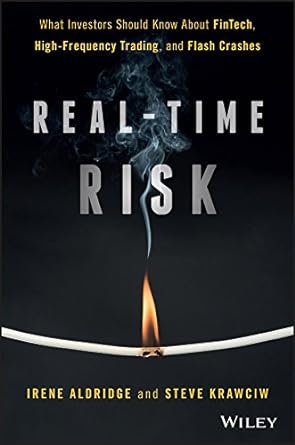Crypto, Tokens or Digital Assets?
As currencies around the world lose value, perhaps it's worth taking another look at crypto -- is it really that bad in comparison?
Please note the blog posts on IreneAldridge.com may contain sponsored or promotional content. To sponsor or promote content on irenealdridge.com, please click here.
What’s in a name? Some market participants believe that “Crypto” may have sullied itself too much to carry a positive connotation ever again. Multiple scandals, unexpected losses, withdrawals, and more have prompted at least some investors to start rebranding initiatives.
Indeed, blockchain, the foundation of crypto, is a transparent, yet secure database useful for many applications. Some of these applications include trade finance: businesses can track product creation from start to finish by recording all parts of the production process on a blockchain. Whether such an approach helps profit margins remains to be seen, but the capabilities of identifying undesirable raw materials, say, oil from an embargoed country, is certainly there.
However, the crypto currency itself is also useful. Like many regular currencies, crypto facilitates payments across the world and a variety of applications. Cong, Li and Wang (2021, “Tokenomics: Dynamic Adoption and Valuation”, in The Review of Financial Studies) point out that the value of a given crypto currency is tied to its adoption and use: the more people find the currency useful, the more they are likely to buy the currency, bidding its valuation in the process. The adoption and usage also enmeshes currency holders’ beliefs about its security and process authenticity: you are just that much more likely to buy and hold something you feel confident about.
As our new paper “Crypto Mining Data: Nature and Inferences” (with Daanial Ahmad, daa227@cornell.edu, forthcoming in the Journal of Financial Data Science) shows, holders of crypto have much to feel good about. In addition to delivering a relatively stable transactional environment, crypto universe has been evolving and improving. For example, gone is the Proof-of-Work (POW) system, the ever-increasing complexity and workload of which was driving away validators and upending the whole DeFi principle. As we show in the paper, the new Proof-of-Stake (POS) model highly democratizes the blockchain validation process, at least on Ethereum, resulting in much more decentralized markets than ever before.
As our research also shows, while rewards in crypto mining are not all equally distributed, they are proportional to the amount of effort the validators put in. Those who validate or mine more blocks reap higher rewards than those who simply dabble in validation occasionally. And with blocks committed to the chain every 12 seconds, there is ample need and room for both miners and their competition.
Of course, many issues remain unsolved and warrant further research. For example, how do you really trace transactions when 1) the owner’s identity is shielded by a hexadecimal account handle, and 2) anyone can create an unlimited number of accounts?
While the latter questions are specific to crypto, broader questions about the currency adoption and respective valuation are universal to all currencies, digital and the plain old kind. The mighty U.S. dollar and the U.K. Pound Sterling enjoy high valuations through people’s trust, at least in part influenced by the political and judicial stability of their respective domiciles. Many other countries see their currencies devalue and outright disintegrate every few years, and even then life goes on. Why do we expect absolute perfection from crypto?
More Real-Time Research

